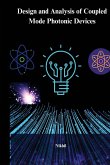Halogenated compounds are a class of chemical compounds that contain one or more halogen atoms, such as chlorine, fluorine, bromine, or iodine, bonded to a carbon or other element. These compounds have a wide range of applications, including as solvents, refrigerants, and fire retardants. However, they can also have harmful effects on the environment and human health, such as contributing to ozone depletion and being toxic. To better understand the properties and behavior of halogenated compounds, quantum chemistry can be used to analyze their molecular structure and electronic properties. Quantum chemistry is a field of chemistry that uses mathematical methods and computer simulations to study the behavior of atoms and molecules at a quantum level. One approach to analyzing halogenated compounds via quantum chemistry is to use density functional theory (DFT). DFT is a computational method that calculates the electronic structure and energy of a system based on the distribution of electrons in space. It can be used to predict the properties of a molecule, such as its geometry, reactivity, and spectroscopic properties. Another approach is to use molecular dynamics simulations, which involve modeling the movement of atoms and molecules over time. This can provide insights into the behavior of halogenated compounds in various environments, such as in a solution or at an interface. One area of research where the analysis of halogenated compounds via quantum chemistry is particularly important is in understanding their environmental impact. For example, DFT can be used to study the interactions between halogenated compounds and ozone, which can lead to ozone depletion in the atmosphere. Molecular dynamics simulations can also be used to study the behavior of halogenated compounds in soil or water, which can help to predict their fate and transport in the environment. Another area of research where quantum chemistry is useful is in drug discovery. Halogenated compounds have been found to have potential as therapeutic agents for various diseases, such as cancer and Alzheimer's disease. Understanding the molecular structure and properties of these compounds can help in the design and optimization of new drugs. In conclusion, the analysis of halogenated compounds via quantum chemistry is an important area of research with many applications in fields such as environmental science and drug discovery. By using computational methods to study the molecular structure and properties of these compounds, we can gain insights into their behavior and potential uses, as well as identify potential risks to human health and the environment.








